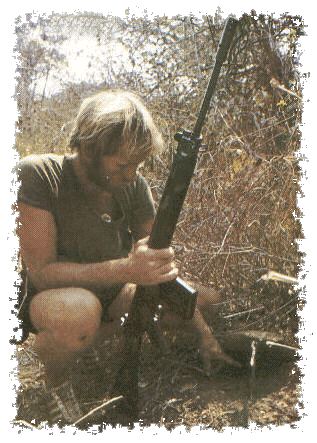This was an interesting little article about the Selous Scouts. These guys were very effective and certainly came up with some important lessons in unconventional warfare. I am sure the writers of todays current COIN operations took some note of the efforts of these guys. At the end of the article, I also posted a link to the Selous Scout manual and site that I found this article at. –Head Jundi
——————————————————————

UNCONVENTIONAL WARFARE LESSONS FROM THE SELOUS SCOUTS
By Leroy Thompson
To understand the Selous Scouts’ methods, one must first understand the Selous Scouts’ mission. The Scouts evolved to varying extents from the Tracker Combat Unit of the Rhodesian Army, the CIO (Central Intelligence Organization), and the Special Branch of the BSAP (British South Africa Police). When Major Ron Reid Daly was given the mission of forming the Scouts, Rhodesia’s borders were becoming less and less secure, as ZANLA and ZIPRA terrorists infiltrated in greater and greater numbers. Though the cover mission for the Selous Scouts remained the tracking of terrorists, in reality the unit was a pseudo-terrorist unit, using turned terrorists and Black soldiers from the Rhodesian African Rifles, as well as White soldiers in black face make-up from the Rhodesian SAS, Rhodesian Light Infantry and other units. These pseudo groups would infiltrate terrorist areas of operation, passing themselves off as terrorists and attempting to subvert the terrorist infrastructure.
In many ways, the Selous Scouts learned from US counter- insurgency successes in Vietnam, drawing on the examples of the Phoenix Program, the Kit Carson Scouts and the Road Runner Teams. Even more did they resemble the successful pseudo teams which had been active earlier in Kenya. Constantly adding turned terrorists, the Scouts kept abreast of current terrorist terminology, identification procedures, and operations; often they were better informed about terrorist procedures than the terrorists themselves.
As the Selous Scouts evolved, they undertook other missions such as cross-border raids, assassinations, snatches, raids on terrorist HQs in Botswana or elsewhere, long-range reconnaissance, and various other types of special operations. One early raid typical of this kind of Scouts’ mission was the snatch of a key ZIPRA official from Francistown, Botswana, in March 1974. These direct action operations resembled in many ways the MAC V/SOG operations in Vietnam. The number of Vietnam veterans in the Rhodesian security forces, in fact, had a substantial influence on the conduct of the war and on slang that was used. Terrorists, for example, were often called ‘gooks’.
The Scouts lured terrorists into ambushes, from which few terrorists normally walked away; captured terrorists and then turned them to serve in one of the Scout pseudo groups; or turned them over to the BSAP for interrogation. The Scouts were very successful in gathering intelligence, at least in part from captured diaries and letters. This is an important element of counterinsurgency operations. Due to the fragmented nature of their operations, guerrillas rarely have ready access to communications equipment. As a result, they may rely on written communication, leaving much open to capture. Few guerrillas are sophisticated enough to use ciphers, either, so often captured communications are ‘in the clear’. Many politically inspired guerrillas are actually encouraged to keep diaries documenting their political development, and these also frequently include valuable intelligence information. Third World insurgents are generally much less security conscious than organized military forces about documents; hence, captured written material can be an excellent intelligence source, especially for order of battle data.